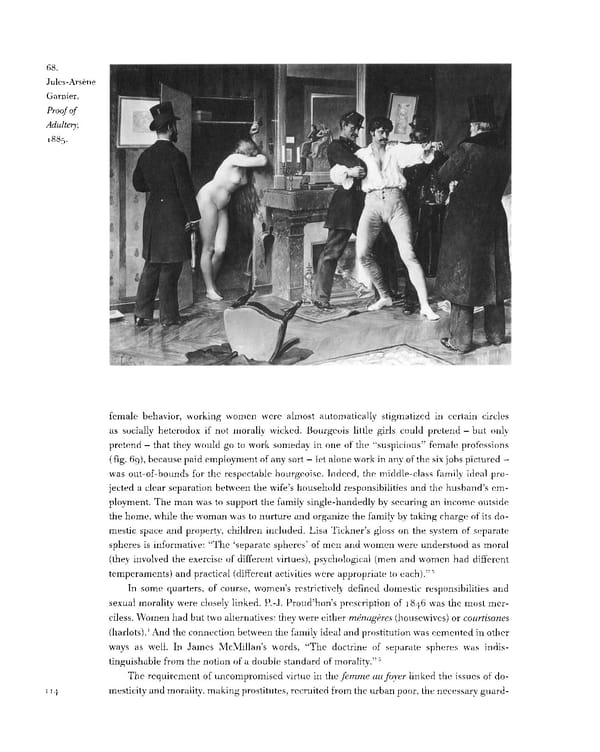68. Jules-Arsene Gamier, Proof of Adultery, 1885. female behavior, working women were almost automatically stigmatized in certain circles as socially heterodox if not morally wicked. Bourgeois little girls could pretend — but only pretend — that they would go to work someday in one of the "suspicious" female professions (fig. 69), because paid employment of any sort — let alone work in any of the six jobs pictured — was out-of-bounds for the respectable bourgeoise. Indeed, the middle-class family ideal pro- jected a clear separation between the wife's household responsibilities and the husband's em- ployment. The man was to support the family single-handedly by securing an income outside the home, while the woman was to nurture and organize the family by taking charge of its do- mestic space and property, children included. Lisa Tickner's gloss on the system of separate spheres is informative: "The 'separate spheres' of men and women were understood as moral (they involved the exercise of different virtues), psychological (men and women had different 5 temperaments) and practical (different activities were appropriate to each)." In some quarters, of course, women's restrictively defined domestic responsibilities and sexual morality were closely linked. P.-J. Proud'hon's prescription of 1846 was the most mer- ciless. Women had but two alternatives: they were either menageres (housewives) or courtisanes (harlots).4 And the connection between the family ideal and prostitution was cemented in other ways as well. In James McMillan's words, "The doctrine of separate spheres was indis- 5 tinguishable from the notion of a double standard of morality." The requirement of uncompromised virtue in the femme au foyer linked the issues of do- 114 mesticity and morality, making prostitutes, recruited from the urban poor, the necessary guard-
 Prostitution & Impressionists Page 134 Page 136
Prostitution & Impressionists Page 134 Page 136